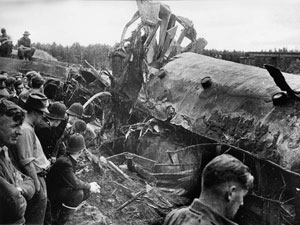1953 Tangiwai railway accident

The cause of the tragedy was a volcanic lahar from the Mt Ruapehu crater lake, which sent a huge wave of water, silt, boulders and debris surging down the Whangaehu River just minutes before the express approached the bridge at Tangiwai. There was evidence that the engine driver had applied the emergency brakes several hundred metres before reaching the bridge. But it was too late to prevent the locomotive, its tender and the first five second-class carriages plunging off the weakened bridge into the raging torrent. The leading first-class carriage toppled in moments afterwards. Three first-class cars and two vans remained on the track.
This was, at the time, the world’s eighth-deadliest rail disaster and made headlines around the globe. The nation was stunned. With New Zealand’s population little more than two million, many people had a direct relationship with someone involved in the tragedy.
The place name Tangiwai means ‘weeping waters’ in Maori. The timing of the accident added to the sense of tragedy. Most of those on the train were heading home for Christmas, armed with presents for friends and family. Over the following days, searchers found many battered, mud-soaked presents, toys and teddy bears on the riverbanks.
Document Actions

 Like us on Facebook
Like us on Facebook